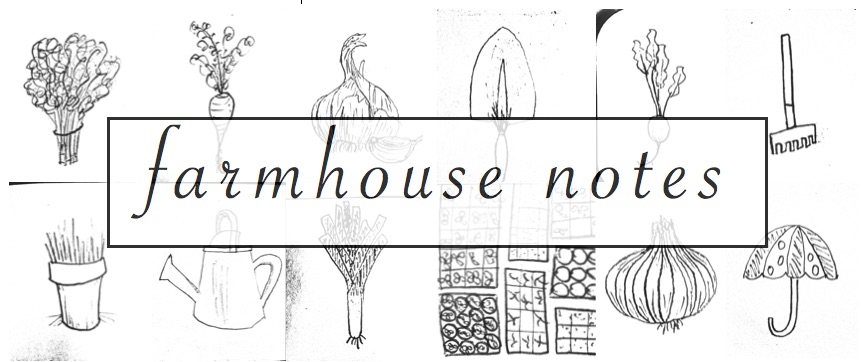 |
| The delicious mozzarella at the cheese class I took this fall, dressed with pickled peppers and herbs |
Cheesemaking, my surprise fall/winter project, has reminded me a lot of canning--basically, that it's precise and recipe driven. Pretty much exactly what my true cooking soul is not. My cheesemaking journey has been bumpy, to say the least, taking me from exhilaration to panic, glee to despair, cheesy delight to masses of mushy failure destined for the cat and the chickens.
There was the honeyed fromage blanc I served to my mom, grandma, and sister on crusty homemade bread (alongside homemade Greek yogurt and homemade butter)--all as delicious as it sounds. But there was also the feta that turned to mush while brining in the fridge, the feta that tasted way off after brining in the fridge, the soft cheese that stayed milk... I could go on.
Still, there's something enchanting about cheesemaking, the act of helping to transform a liquid to a solid in a matter of minutes or hours, of trusting things I can't see (like cultures) to do their work and make me cheese.
Last week, mozzarella. Success and failure.
After we milked the cow on Wednesday, we got home around 6:30 with three gallons of warm, raw milk. I plunged two gallons into a sink full of ice water to speed the cooling process, and dumped the other gallon into a big pot. I perused four quite different mozzarella recipes, including two quick ones that differ at almost every step, and then decided to follow the quick recipe I'd observed at the cheese class I took last fall. While Tim cooked rib chops and carrots, I stirred in the citric acid, heated the milk, added the rennet, cooked the curds, and had a plateful of sliced mozzarella balls dressed with olive oil, balsamic, and oregano ready in time for an appetizer. The success was
sweet. From cow to cheese in under two hours!
Half of the sweetness was the smoothness of it all, too, the lack of disasters, the fact that the mozzarella was
mozzarella, just like it was supposed to be.
So then, of course, it was all the more disappointing to open up the jar of mozzarella balls at lunch the next day and discover that the poor babies had, while floating in their brine, turned into mush. I am not at all sure what this brine = mush thing is. I did eat some for lunch, but we also gave some to the cat--it was just not the same.
Back to the stove that night, I decided to follow the other quick mozza recipe--from
Home Cheesemaking--because, hey, cheese might feel like magic sometimes, but it's really a science, and I was irresistibly curious. Why are they so different? This recipe called for one and a half times as much citric acid, a higher temperature for adding the rennet, and a completely different method and temperature for shaping the mozzarella. (You can see the differences below if you're curious.) And, just for kicks, I shaped it into one big ball instead of a bunch of tiny ones.
The final cheese, which probably took a bit longer than the first to finish, although still ready in time for dinner, was smooth and easily sliceable. It was a much firmer consistency than the night before, and squeaky. Even more
mozzarella. When dredged in a tangy balsamic and scattered with chunky sea salt, it is, well, something that will make you want to rejoice in Italian and raise your wine glass so exuberantly that the wine all sloshes out.
Moral of the story? Both cheese were successful, and both were mozzarella. But I'm hypothesizing that a few factors contributed to a firmer cheese with a more strongly
mozza mouthfeel:
- Pressing the whey out of the curds before heating them to the magical protein alignment point
- Getting the whey above the target curd temperature of 125 (the curd becomes more reliably taffy-like and stretchable)
- Kneading and stretching the curds until smooth before shaping them into balls
How's that for scientific?
Mozzarella 1:
1 tsp citric acid: 1 gallon milk
1/8 tsp rennet
Heat milk to 86 degrees before adding rennet
Let milk set for 5-10 minutes (I had a fairly clean break after 5 minutes)
Raise curd and whey to 125 degrees
Shape into balls
Mozzarella 2:
1 1/2 tsp citric acid: 1 gallon milk
1/8 tsp rennet
Heat milk to 90 degrees before adding rennet
Let milk set for 5 minutes (I had a very clean break after five minutes)
Raise curd and whey to 110 degrees
Remove from heat and stir curd for 5 minutes (for firmness)
Remove curds and gently press out all the whey you can
Heat whey to 175 degrees
Drop curd into the hot whey until stretchable, like taffy
Knead until smooth and shiny
Shape into balls








































